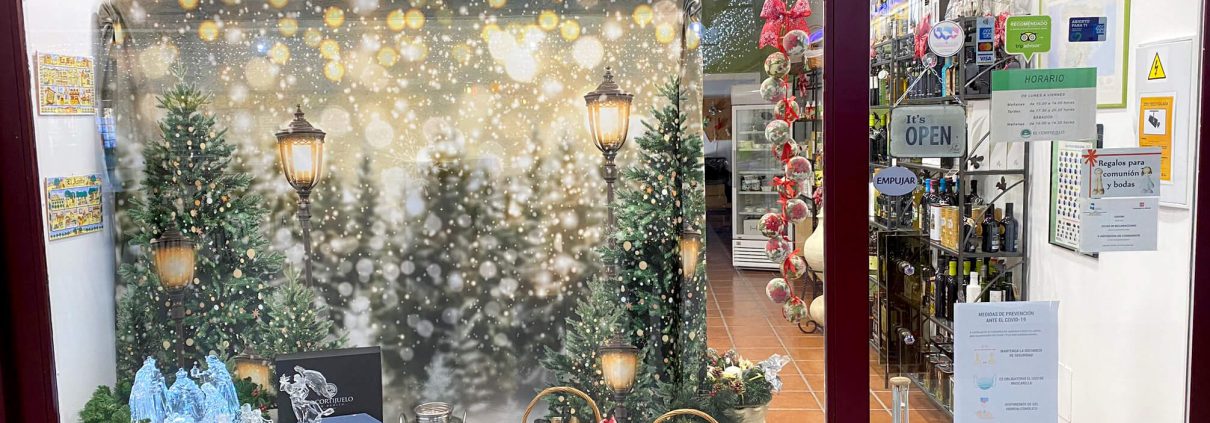Current trends in beekeeping
Over the last three decades, beekeepers have diversified their sources of income in order to adapt to changing times. Among the recommendations of different thinkers, specialists and organisations, numerous ideas have been put forward, including the sale of honey in bulk, in jars, and with different descriptions. All this to improve productivity and keep the beekeeping business profitable.
Índice:
|
Summary: Adapting to the laws of the market, farmers are taking different strategies, which in the end become trends. Also, if we take a look at the past, we can see how the sale of honey has changed over the last decades. Finally, many of these trends are reflected in our shop in Las Rozas de Madrid.
Related articles: Where to buy quality raw honey? Honey is fattening, myth or reality.
1. The past in the sale of honey
The sale of honey has changed a lot in recent decades. In the past, it was the consumers themselves who brought the jars to buy the honey, and it was not surprising that honey was stored at home in jars of other products. However, this gradually changed, and beekeepers no longer sold most of their honey in bulk, but supplied their own containers.
Consequently, different containers started to appear, from ceramic to glass jars. Ceramic and glass jars with a wide variety of looks, in order to differentiate the different brands. All this in order to attract consumers and increase sales of honey and other products from the hive.
2. Different current beekeeping trends
Among the different current beekeeping trends being applied by beekeepers, we have the following:
a) Return to tradition
One of the trends that some beekeepers have taken is towards tradition. In this case, many beekeepers started to sell their honeycombs directly, in a variety of ways. Some in plastic trays, others in glass jars, others a bit more sophisticated, refilling the jars with more honey. Some beekeepers even sell the honeycomb with the frame itself.
The aim of all this is to recover all the aromas of yesteryear. Aromas that some will remember from their childhood, when the honey they bought might have some traces of wax and propolis. This trend continues to this day. In the case of my shop, this honey has a fixed demand.
b) Indication of origin and floral provenance
Another diversification strategy was the indication of the honey’s origin and floral provenance. This diversification is working and our shop is proof of it. This diversification is supported by official bodies, where the origin is highlighted, such as the honeys from La Alcarria, Galicia, Granada, etc. Also, the indication of the floral origin such as multi-flower honeys, or single-flower honeys, such as: lavender, eucalyptus, thyme, heather, etc. In our shop at least more than 20 varieties of monofloral honeys.
c) Ecological or organic production
Another diversification has been with organic or ecological honeys. These organic honeys must follow the principles of organic production, both in the apiaries, in the packaging room and in all other work carried out by the beekeeper. However, the final step to be an organic honey is to pay the corresponding costs to indicate this designation, otherwise it cannot be organic.
d) Traceability
Alongside all these trends, there is now the idea of traceability. Thus, a kind of curriculum vitae, where every step that the honey has gone through has to be known. All this can be done with the advancement of technology, but it is not affordable for all beekeepers. Therefore, it is a new trend that can take any product, but it can only be carried out by producers with a higher income.
e) Honey with other products
This trend, which is not carried out in Spain by all beekeepers, consists of mixing honey with other products. Examples of this are honey with propolis, honey with royal jelly, with candied fruit, with ginger, with cinnamon, etc. All of them are also available in our shop.
3. Use of by-products
In order to improve the economic conditions of beekeepers, by-products arise which can have a market value and can therefore be marketed. An example of this is the honey residues left in the hive frames and other tools of the beekeepers.
Therefore, a first use of these by-products is to dissolve the honey left in the utensils with water. This is done by washing the utensils and frames with water. This water is then boiled to increase the concentration of sugars. Finally, they use it to make meloja or arrope. In some cases, they make more elaborate recipes, producing arrope with pumpkin, walnuts, etc.
This syrup can also be consumed in many ways. Simply as a sweetener, as a substitute for jams. It is also delicious with fresh cheese.
On the other hand, these by-products are also used in the production of haute cuisine sauces, in the production of liqueurs and mead. In short, there are many uses that can be made of it in the gastronomic industry.
4. New possibilities
In the search for new possibilities, beekeepers are developing a great deal. One of the new trends being developed is the production of honey beers. These beers can be brewed with barley or wheat for coeliacs. Numerous liqueurs are also being developed with honey and vinegar.
All in all, all these innovations are a good way to diversify the income of beekeepers. In addition, they help to stabilise the beekeeping sector and, finally, they promote the development of rural areas, because beekeeping is a rural activity. On the other hand, we, with our specialised honey shop, intend to make this diversity known and to continue to support rural areas.
Source:






Leave a Reply
Want to join the discussion?Feel free to contribute!